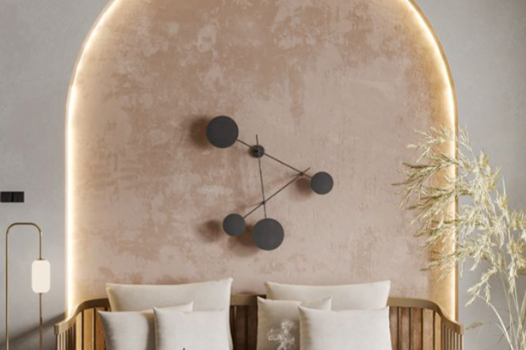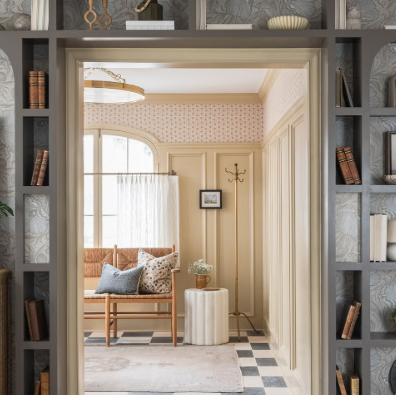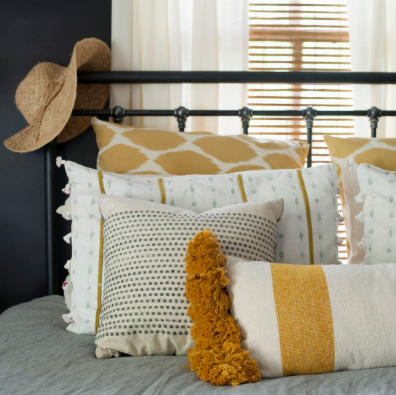
Lighting is a crucial component of interior design, shaping both the functionality and aesthetics of a space. It has the power to influence the mood, highlight unique features, and make your home more practical. In this post, we’ll explore the different types of lighting in interior design, the concept of decorative lighting, and tips to enhance your space with thoughtfully placed light fixtures.
Why Lighting Is Essential in Interior Design
Lighting plays a pivotal role in the ambiance and overall function of a room. Well-executed lighting can bring out textures, define spaces, and support activities, making it an essential element in any design.
Why Lighting Matters:
- Sets the Mood: Lighting establishes the atmosphere, whether it’s cozy and intimate or bright and energizing.
- Emphasizes Key Features: Accent lighting draws attention to artwork, architectural details, or standout furniture.
- Supports Practical Tasks: Task lighting ensures clear visibility for activities like reading, cooking, or working.
- Defines Space: Thoughtful lighting can visually divide areas, particularly in open-plan spaces.
Main Types of Lighting in Interior Design
Creating a well-lit space involves using a mix of lighting types to balance both style and function. Let’s break down the three primary types of lighting used in interior design:
- Ambient Lighting
This is the primary light source in any room, offering a soft, even glow to ensure the entire space is well-lit without harsh shadows.- Examples: Ceiling lights, chandeliers, and recessed lighting.
- Tip: Use dimmers to control brightness and create a variety of moods.
- Task Lighting
Task lighting is designed to focus light on specific areas where activities take place, such as reading or cooking. It helps reduce eye strain and enhances focus.- Examples: Desk lamps, under-cabinet lights in kitchens, and vanity lights.
- Tip: Position task lighting so it doesn’t cause glare or shadows on your work surface.
- Accent Lighting
Accent lighting is used to highlight specific features in a room, such as artwork, plants, or textured walls. It adds depth and visual interest to a space.- Examples: Track lighting, wall-mounted sconces, and spotlights.
- Tip: Use adjustable fixtures to direct light precisely where it’s needed.
What Is Decorative Lighting in Interior Design?
Decorative lighting combines style with function, playing a dual role of enhancing the aesthetics of a space while providing necessary illumination. It adds personality, flair, and elegance to your room, much like jewelry adds to an outfit.
Features of Decorative Lighting:
- Focuses more on style than mere illumination.
- Includes unique and striking fixtures like ornate chandeliers, pendant lights, and designer lamps.
- Complements the overall theme and decor of the space, becoming a focal point in its own right.
Decorative lighting bridges the gap between beauty and utility, making it a key component in modern home design.
Creative Ways to Use Lighting in Interior Design
Here are some innovative ways to use lighting to make a statement and create functional spaces:
- Layer Lighting to Add Depth
Combining ambient, task, and accent lighting creates a multi-dimensional space that is versatile and visually dynamic. - Invest in Statement Fixtures
Bold lighting fixtures can double as art pieces. A sculptural chandelier or an unusual floor lamp can become the room’s centerpiece. - Highlight Architectural Features
Accent lighting is perfect for showcasing elements like alcoves, vaulted ceilings, or exposed beams. LED strip lights work well for this purpose. - Incorporate Smart Lighting Controls
Smart lighting systems let you adjust brightness, color temperature, and scheduling, offering convenience and energy efficiency. - Experiment with Unique Decorative Lighting
Choose lighting with creative designs, vivid colors, or unexpected shapes to infuse personality and create visual drama.
Lighting Tips for Different Rooms
- Living Room
Use warm, soft lighting for a cozy atmosphere. Add task lighting to reading areas, and install dimmable fixtures to adjust the mood as needed. - Kitchen
Bright, focused lighting is essential for meal prep. Under-cabinet lights work well, and pendant lighting over the island adds both style and function. - Bedroom
Combine soft lighting with task lamps by the bed. Wall-mounted sconces can help free up space while adding elegance. A decorative pendant light can give the room a luxurious feel. - Bathroom
Install vanity lights for even illumination, and use soft accent lighting for a spa-like atmosphere. Ensure all lighting fixtures are moisture-resistant and suitable for wet areas.
How to Select the Right Lighting Fixtures
- Consider the Function
Decide if the lighting will primarily serve to illuminate, decorate, or highlight a feature in the room. - Match the Style
Choose lighting that complements the overall design of the room, whether it’s modern, rustic, or eclectic. - Mind the Size
Ensure the scale of the lighting fixture fits the room. Large fixtures can overwhelm smaller spaces, while small fixtures may not provide enough light in larger rooms. - Focus on Energy Efficiency
Opt for LED lights, which are energy-efficient and long-lasting, helping to reduce electricity costs over time.
Conclusion
Lighting is an essential element in interior design that can transform any space, enhancing both its functionality and style. By understanding the different types of lighting and incorporating creative lighting techniques, you can elevate your home’s atmosphere and make it more visually dynamic. Whether you’re layering light for depth or investing in striking statement fixtures, lighting is a tool that allows you to shape your living space into a stylish, functional sanctuary.










